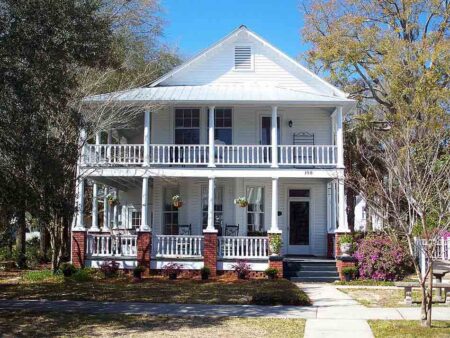Many gardeners experience dying or stunted trees and shrubs as a result of simply planting them too deep. A study that addressed this issue was conducted at the University of Florida in Gainesville. Various species of trees and shrubs were installed at different planting depths. The goal was to determine the effects that depth of installation had on the establishment and subsequent growth of these plants.
NICEVILLE, Fla — Many gardeners experience dying or stunted trees and shrubs as a result of simply planting them too deep.
A study that addressed this issue was conducted at the University of Florida in Gainesville. Various species of trees and shrubs were installed at different planting depths. The goal was to determine the effects that depth of installation had on the establishment and subsequent growth of these plants.
In this research, the top of the root ball for each tree and shrub was installed at various depths: 1) slightly above grade; 2) even with the top of the ground; 3) two inches below the soil surface and 4) four inches below the surface.
I had an opportunity to see this work in person years ago and the differences in tree growth and development were obvious. The trees and shrubs that were planted 2 and 4 inches below grade were easy to find. They were stunted and, in some cases, in a state of decline.
Shrubs and trees that are planted too deep can be damaged in two different ways. The roots of trees and shrubs must receive atmospheric oxygen in order to survive. If plunged too deep in the soil, root suffocation begins almost immediately.
Deep planting also can girdle/rot the base of plants. Stems and trunks, being above-ground plant parts, differ from root tissue. If soil is placed against these parts that are accustomed to air, then rot organisms begin to breakdown the bark and work its way into the vascular system, which is just below the outer protective bark. Once the tubes that move water, minerals and food within the plant are interrupted, then the plant eventually declines or dies – simply from being planted too deep.
So, what’s the right planting depth?
Dr. Ed Gilman, the now-retired researcher who conducted the study, recommends planting relatively shallow. In fact, he provided a good rule of thumb for use when transplanting. “Leave the uppermost root showing” when the job is complete.
That might seem extreme, but take a look at trees and shrubs that are growing in the wild. Almost without exception, you will see one or more larger roots partially exposed at the surface. This is the depth at which that particular plant grows. If we duplicate that depth when planting trees and shrubs, there is a much better chance of success.
But if you plant your trees and shrubs too deep, at best they’ll be stunted, at worst, they’ll live a short life.
Here is a link to a UF/IFAS Extension publication with more info, including pictures, on how to correctly plant trees. https://edis.ifas.ufl.edu/pdffiles/EP/EP31400.pdf
Larry Williams is the Extension horticulture agent with the Okaloosa County Cooperative Extension Service, University of Florida. Contact Larry at 689-5850 or email lwilliams@myokaloosa.com.







